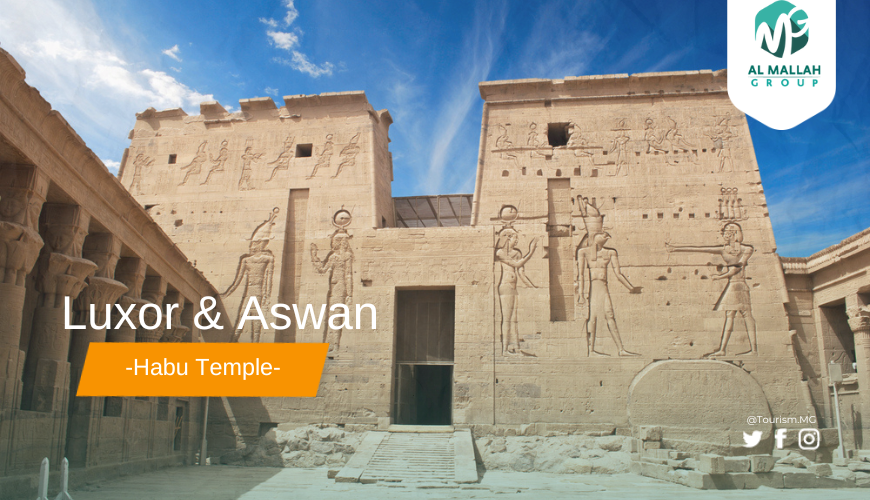The temple is known by multiple names, whether as " Habu Temple" or " Ramses III Temple" or even "The Eternal Temple." Although the name "Habu" or "Habu" is attributed to the Christian monk known as "Habu," the temple is considered among the most magnificent and important funerary temples.
Ramses III built his victories on its walls, and it was considered a temple for Amun, the god of war, as well as for Sekhmet and Osiris, where Sekhmet was depicted as a woman with the head of a lioness, symbolizing strength and ferocity. The ancient Egyptians placed great importance on building funerary temples to perform their rituals.
Ramses III's choice of this site was not random, as he began building the temple in this area, and it was completed by Queen Hatshepsut and then finished by Thutmose III. When Christianity entered Egypt, the second courtyard of the temple was converted into a church for Christians in this area.
The temple consists of two east and west gates, a temple for Amun, and a sacred lake on the right side of the eastern entrance, with an outer wall of mudbrick, and there are still some ruins of it. The temple also has an inner wall for protection and a sacred courtyard containing statues of Sekhmet and Ramses III.
Inside the temple, there is the first sanctuary and its courtyard dedicated to rituals, in addition to a royal palace for Ramses III with a terrace where celebrations and rituals could be observed. Following this is the second sanctuary and its courtyard, distinguished by magnificent cylindrical columns telling the story of Ramses III's victory over the Libyans. Behind it lies the Great Hall of Columns, of which some simple parts remain, followed by some rooms and small temples leading to the holiest of holies.


